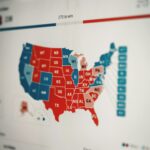The Flexibility of Education in a Pandemic
The COVID-19 pandemic has changed the world in more ways than one – spanning from how we communicate with one another and how we work within our organizations, to how our children are educated. A recent survey done in the midst of the COVID-19 pandemic by the D.C. based non-profit Learning Heroes, found that 7 out of 10 parents intend to become more involved in their child’s day-to-day academic activities. Parents have consistently overestimated the academic achievement of their children for years, due to a lack of direct involvement, but the results of this survey offer a glimmer of hope – one where parents are actively looking for ways to improve their child’s learning as their homes turn into the classroom.
According to Learning Heroes, 67% of parents have felt more connected with their child’s day-to-day learning throughout the course of the pandemic. Yet, in the same survey, less than half of parents received necessary resources from their child’s school to help support that learning. These missing resources include: personal technology, access to mental health services , and tutoring. As parents continue to adapt to the realities of at-home education for their children and become more involved, it’s becoming even more apparent that we need more flexibility in traditional education.
Traditional education lacks innovation and does not take an individualized approach to teaching students; it has evolved into a top down, one size fits all system with many inefficiencies. In a digital setting, those inefficiencies are amplified. The pandemic points to a solution that has been lingering in the background of education reform for years: Education Savings Accounts (ESA). Education Savings Accounts allow parents to obtain a restricted-use debit card that contains their child’s per pupil education allocation in order to pay for tuition at private or charter schools, therapists, tutors, books, or supplies.
Education Savings Accounts in Practice
In Arizona, the first state to implement an ESA program, Education Savings Accounts are restricted to high-need students, such as low-income students, children of military personnel, and children with special needs. The COVID-19 pandemic has significantly impacted these groups of students disproportionately more than their peers. Education Savings Account programs give the parents of these children the option to provide additional support in an at-home learning environment. Not only does the flexibility of an ESA allow a parent to buy better technology or other materials, but it also allows parents to invest in the long-term success of their child because the monetary benefits of an ESA roll over from year to year.
The flexibility that ESA programs provide, especially in a world that is adapting to a new normal, is ideal for increasing parental involvement. In turn, students may see increased progress, and parents may feel empowered to continue their involvement in their child’s education beyond the pandemic. Parental involvement is linked to high academic achievement, and by setting a precedent for parental involvement through ESA programs, students can very well learn to thrive at home.
The education system needs to become more student focused. By allowing parents to make the right decisions for their children the possibilities for their education are endless. Putting the future of children in the hands of bureaucrats will only result in a slew of ill-educated students and under-involved parents. Parents want the best future for their children, and the future of education needs to be one of educational liberty.




